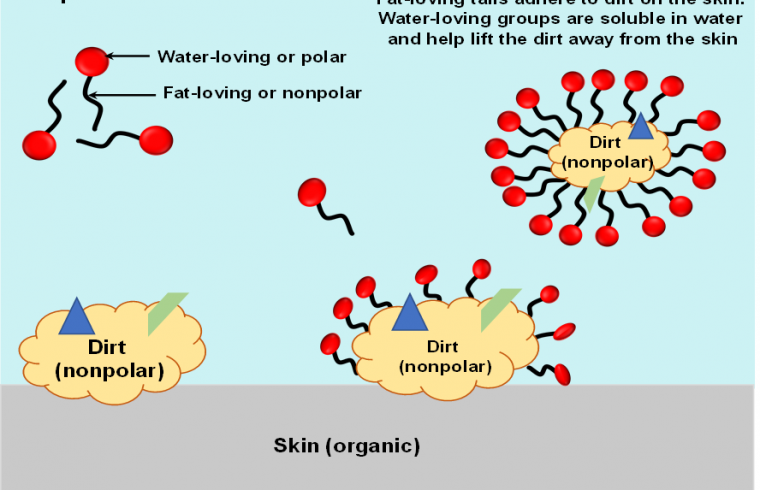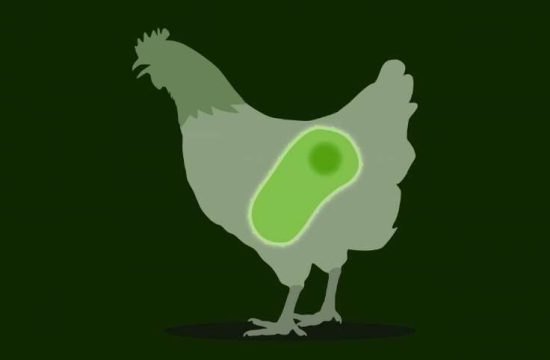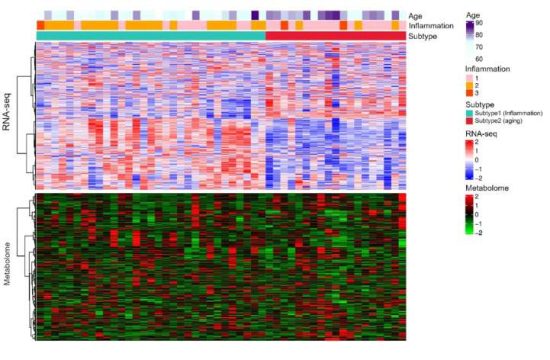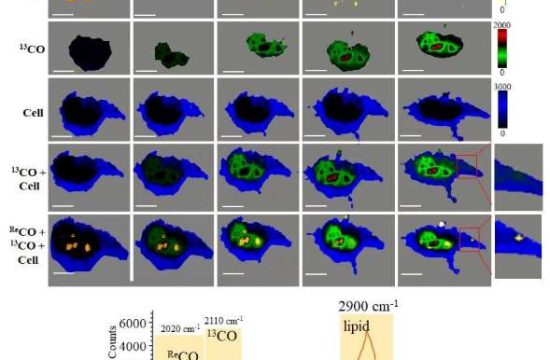The soap dissolves the fat (lipid) membrane of the virus and falls apart like a card castle thereby becoming inactive.
Ramesh Nature | a PhD Candidate for Kansas State University’s Department of Chemistry

At this moment, all of the news outlets and social media are full of coronavirus. Since the declaration of public health emergency of international concern by the International Health Regulations Emergency Committee of World Health Organization (WHO) on January 30, 2020; the outbreak of respiratory disease caused by a novel coronavirus that has now been detected in 90 countries (as of March 7). Coronavirus disease 2019 (COVID-19) was first detected in Wuhan China. It has been confirmed that coronavirus killed about 3500 peoples with more than a hundred thousand confirmed cases worldwide.
As the coronavirus continues to spread across the world, peoples are preparing to stay on top of cleanliness to prevents the spread of diseases.
WHO has been warning that the virus’s spread in the country is inevitable. This means its time to prepare our home and family in case of our community is affected. There have been many reports of shortages of hand sanitizer gels and even shortage for the healthcare workers, as washing our hands is one key way to prevent the spread of the virus.
By properly washing hands, we can help reduce the risk of transmission and do our part to protect others in case our family is affected. Do not panic! And do not worry if you don’t have sanitizer gel. We all have normal soap at home and you know, soap is very effective against many coronaviruses. So, why does soap works so well on coronavirus?

When soapy water is mixed with dirt (or coronavirus), the soap molecules arrange themselves into tiny clusters called micelles (see figure 3, micelles with dirt). These micelles are very small in size ranging from 2 nanometers to 20 nanometers, depending on the composition and concentration. (A nanometer is a distance unit representing one-billionth of a meter, or one-millionth of a millimeter. Roughly 1 nanometer is 1000 times smaller than a single hair). The soap dissolves the fat (lipid) membrane of the virus and falls apart like a card castle thereby becoming inactive.
According to research, viruses can be active outside the body for hours or even days (see figure 2, the timeline of coronavirus). Disinfectants such as liquids, wipes, spray, gels, and creams containing alcohol with some soap have a similar effect but are not quite as good as normal soap. Apart from the alcohol and soap, the antibacterial agents in these products don’t affect the virus structure much at all. But why exactly is soap so good? To explain that, I will take you through a journey of chemistry, nanoscience, and viral structure. I try to explain this in general terms as much as possible.

I am an expert in nanoscience of the arrangement of molecules into tiny clusters or nanoparticles but I am not an expert in virus biology. I have always been fascinated by biological processes and the parts of cells as I see them as tiny materials. First, let us look at the structure of the coronavirus. The basic structure of the virus is shown in figure 1 below. Many viruses consist of three key building blocks which are ribonucleic acid (RNA), proteins, and lipids.
The RNA is the viral genetic material that is very similar to DNA. The proteins have several roles including breaking into the target cell and assist with virus replication. Instead, the viral self-arrangement into a cluster or shape is based on weak non-covalent interactions between the proteins, RNA, and lipids (fats). Together these act like a hooked velvet so it is very hard to break down or separate the clustered viral particles. No problem! Thanks to the soap that can separate weak non-covalent interactions. Most viruses, including the coronavirus, are between 50-400 nanometers and therefore, they are nanoparticles. Nanoparticles have complex and different interactions with surfaces such as skin, fabric, steel, wood, and paints they are on. The same case applies to viruses. When a virus invades a cell, the RNA hijacks the cellular machinery and forces the cell to start to make many fresh copies of its RNA and the various proteins that make up the virus. These new RNA and protein molecules, self-assemble with lipids to form new copies of the virus.
That is, the virus does not photocopy itself, it makes copies of the building blocks which then arrange themselves into new viruses. All those new viruses eventually overwhelm the cell and it dies/explodes releasing viruses which then go on to infect more cells. In the lungs, some of these viruses end up in the airways and the mucous membranes surrounding these. When you cough, or especially when you sneeze, droplets from the airways can go at least 2 m (7 ft). Therefore, covering our coughs & sneezes is very important to minimize its spread. These tiny droplets end on surfaces and often dry out quickly. But the viruses are still active. What happens next is all about chemistry and how self-assembled nanoparticles (like the viruses) interact with their environment.
The molecules which are similar interact more strongly with each other than dissimilar ones. Wood, fabric and not to mention our skin interact fairly strongly with viruses. However, steel, porcelain, and some plastics like Teflon have weak interactions.
Moreover, the surface structure also matters – the flatter the surface the less the virus will stick to the surface and rougher surfaces can pull the virus apart. So, a question comes why are surfaces different? The virus is held together by a combination of hydrogen bonds similar to those in water and what we call hydrophilic (water-loving) or fat-like (fat-loving) interactions. The surface of fabric or wood, for instance, can form a lot of hydrogen bonds with the virus.
In contrast steel, porcelain, or plastics do not form a lot of hydrogen bonds with the virus. So the virus is not strongly bound to these surfaces. The virus is quite stable on these surfaces whereas it doesn’t stay active for as long as compared to fabric or wood. For how long does the virus stay active? It depends. The coronavirus is thought to stay active on favorable surfaces for hours, possibly a day or more. Moisture by dissolving, sunlight with partly ultra-violet light and heat by molecular motions, all make the virus less stable.
The skin is an ideal surface for a virus. It is organic and the proteins and fatty acids in the dead cells on the surface interact strongly with the virus through both hydrogen bonds and the fat-like hydrophilic interactions. So when you touch a steel surface with a virus particle on it, it will stick to your skin and hence get transferred onto your hands. But you are not yet infected possibly.
If you touch your face though, the virus can get transferred from your hands and on to your face. And now the virus is dangerously close to the airways and the mucus type membranes in and around your mouth and eyes. So the virus can get in and infect you. You are infected unless your body defense (immune) system kills the virus. If the virus is on your hands you can pass it on by shaking someone’s else hand, sneeze, and kiss.

So how often do you touch your face? Most people touch their face once every 2-5 minutes. Yeah, so you are at high risk once the virus gets on your hands unless you can wash the active virus off. So let’s try washing it off with plain water. It might just work. But water only competes with the strong glue-like interactions between the skin and virus through hydrogen bonds. The virus is quite sticky and may not budge. Therefore, water alone isn’t enough. Soapy water is different. The soap contains fat-like substances knowns as amphiphiles (having both water-loving and fat-loving parts in a molecule), some structurally very similar to the lipids (amphiphiles) in the virus membrane. The soap molecules compete with the lipids in the virus membrane. The soap molecules also compete with a lot of other non-covalent bonds (weak interactions) that help the proteins, RNA, and lipids to stick together. The soap is effectively dissolving the glue that holds the virus together. Moreover, the soap also outcompetes the interactions between the virus and the skin surface. Soon the viruses get detached and fall apart like a card castle due to the combined action of the soap and water. That means the virus is gone!
The skin is quite rough and wrinkly that is why you do need a fair amount of rubbing and soaking (roughly 20 seconds as recommended by experts) to ensure the soap reaches every crook and nanny on the skin surface that could be hiding active viruses. Alcohol-based products, which include all disinfectants and/or antibacterial products that usually contain a high percentage alcohol solution, typically 60-80%, and then water with a bit of soap-like emollients that make them gentler on the skin. Ethanol (alcohol that is present in drinks) and other alcohols do not only readily form hydrogen bonds with the virus material but as a solvent, are more lipophilic (fat-like) than water.
Hence, alcohol does also dissolve the lipid membrane and disrupt other molecular interactions in the virus. However, you need a fairly high concentration (more than 60%) of the alcohol to get a rapid dissolution of the virus. Vodka, Khukuri rum or whiskey contains usually 40% ethanol will not dissolve the virus as quickly. Overall alcohol is not quite as good as soap at this task. Nearly all antibacterial products contain alcohol and some soap and this does help killing viruses. But some also include active bacterial killing agents, like triclosan. Those antibacterials, however, do nothing to the virus.
In summary, viruses are almost like little grease-like nanoparticles. They can stay active for many hours on surfaces and then get picked up by touch. They then get to our face and infect us because most of us touch the face quite frequently. Water is not very effective alone in washing the virus off our hands. The alcohol-based product works better.
But nothing beats soap – the virus detaches from the skin and falls apart very readily in soapy water. Here you have it –chemistry and nanoscience tell us not only a lot about how the virus self-assembled into a functional active threat but also how we can beat viruses with something as simple as soap.
(This article is based on my chemistry-nanoscience knowledge and updated using following references listed below. This piece is written for general information and education purpose only)
References:
1. https://www.cdc.gov/coronavirus/2019-ncov/index.html
2. https://www.who.int/health-topics/coronavirus
3. https://twitter.com/PalliThordarson
4. https://doi.org/10.1016/j.cell.2020.02.052
5.https://medium.com/@edwardnirenberg/sars-cov-2-and-the-lessons-we-have-to-learn-from-it-e2017fd5d3c
6. https://els-jbs-prod- cdn.literatumonline.com/pb/assets/raw/Lancet/infographics/coronavirus/Coronavirus_MedianTimeline_Infographic-1580399120550.jpg








